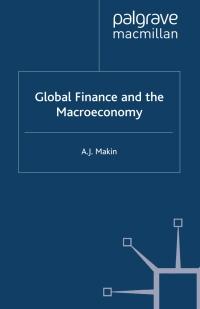Question
Question 12.1 (3 marks) Is Fraser correct in the description of APT? A. Yes. B. No, she is incorrect with respect to Assumption 2. C.

Question 12.1 (3 marks) Is Fraser correct in the description of APT? A. Yes. B. No, she is incorrect with respect to Assumption 2. C. No, she is incorrect with respect to Assumption 3. Question 12.2 (3 marks) Is Fraser most likely correct in identifying existence of arbitrage opportunities among the three portfolios? A. Yes. B. No, because Portfolio I has the highest factor sensitivity. C. No, because Portfolio III has the highest expected return. Question 12.3 (4 marks) The three-factor model is most likely applied for: A. portfolio construction. B. return attribution. C. risk assessment. Question 12.4 (4 marks) The three-factor model described by Kramer is most likely a: A. macroeconomic factor model. B. statistical factor model. C. fundamental factor model.
The following information relates to questions 12.1-12.4. Corgan Investments is an investment advisory and portfolio management firm that specializes in equities in energy sector in various global markets. Brenda Fraser, senior portfolio manager, is discussing management of the firm's portfolios with a recently hired analyst Patrick Ricoh. Fraser states, We use factor models when analyzing regional energy index expected returns." Fraser continues, "Factor models are based on the arbitrage pricing theory (APT), which works under three key assumptions: Assumption 1: A factor model describes asset returns. Assumption 2: Investors can construct well-diversified portfolios that eliminate factor risk. Assumption 3: No arbitrage opportunities are possible among well-diversified portfolios." Fraser adds: Upon analysis of our three regional portfolios, I have found that all the three portfolios show sensitivity to price-to-cashflow factor (P/CF) as given in Exhibit 1. Information from Exhibit 1 shows the possibility of an arbitrage opportunity that can be exploited by buying Portfolio III while selling short 40% of Portfolio I and 60% of Portfolio II." Exhibit 1. Portfolio Sensitivities to P/CF Factor Portfolio Expected Return Factor Sensitivity 12.0% 0.9 13.3% 0.4 15.3% 0.6 Fraser concludes, "For our securities analysis we use a three-factor model, to compare the mean expected return of the regional energy index with an individual security's expected return. The three factors are: Factor 1: P/CF factor that compares stocks of firms in the highest P/CF quartile with the stocks of firms in the lowest P/CF quartile. Factor 2: A sector excess return factor that compares local energy sector returns with the entire local equity market (MKT). Factor 3: A capital investment factor." I II ITIStep by Step Solution
There are 3 Steps involved in it
Step: 1

Get Instant Access to Expert-Tailored Solutions
See step-by-step solutions with expert insights and AI powered tools for academic success
Step: 2

Step: 3

Ace Your Homework with AI
Get the answers you need in no time with our AI-driven, step-by-step assistance
Get Started


